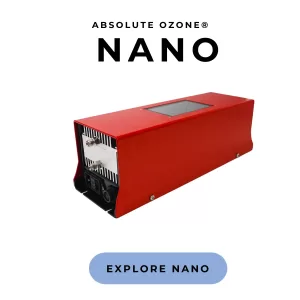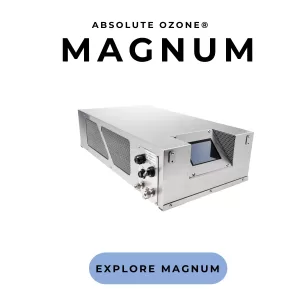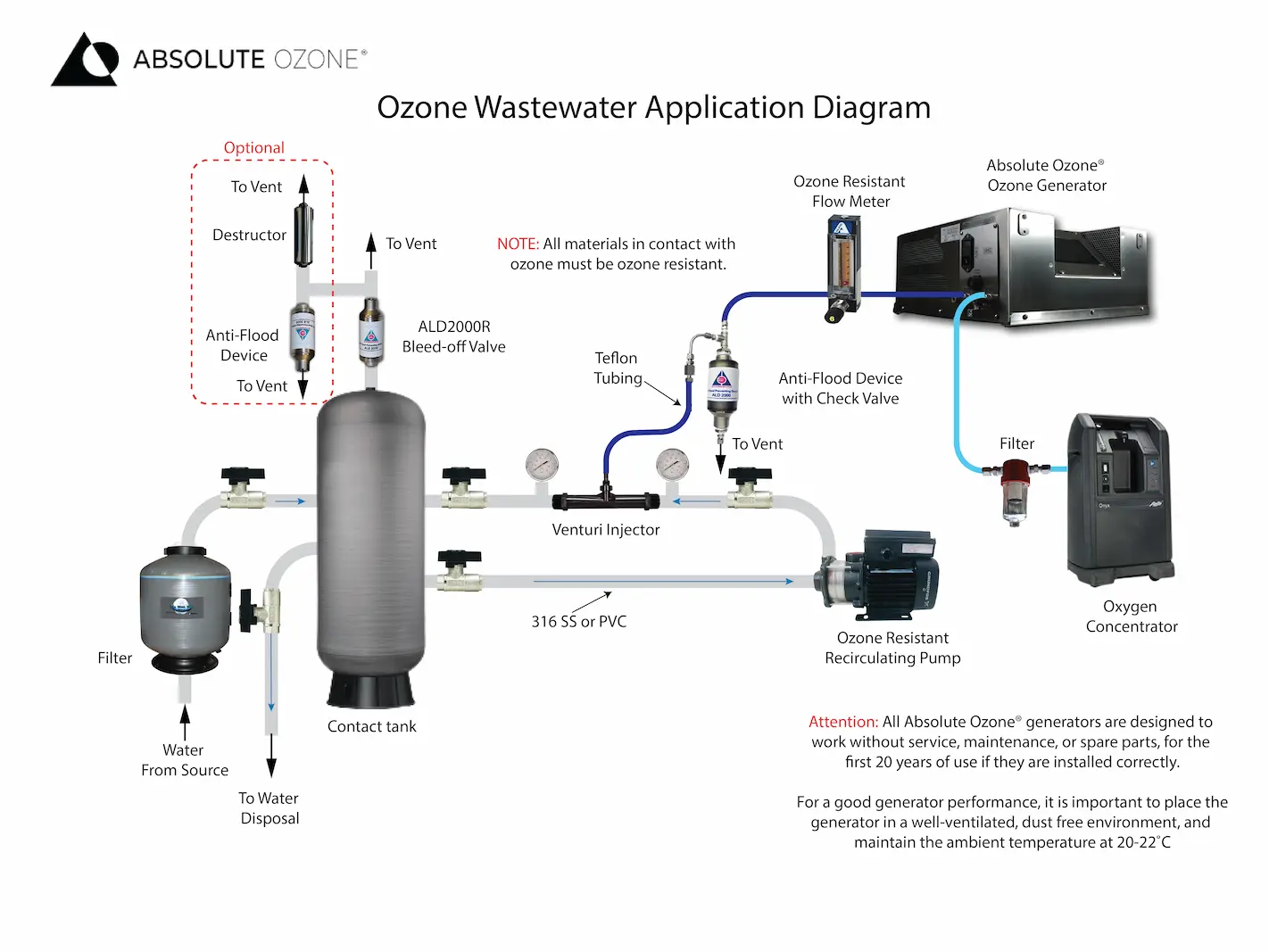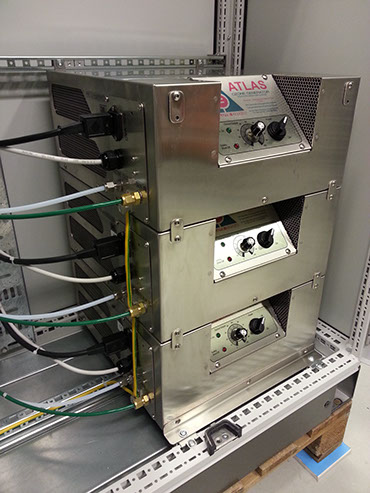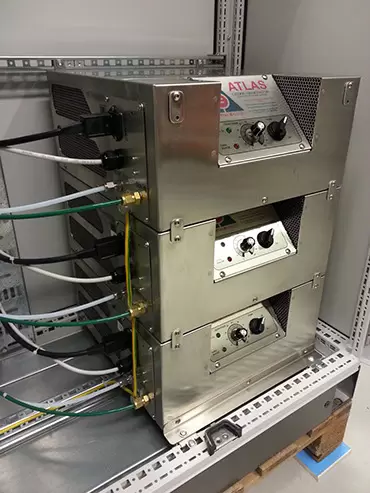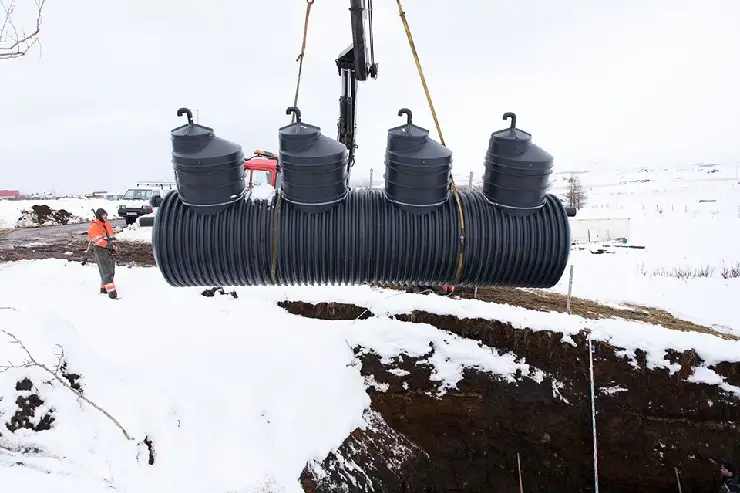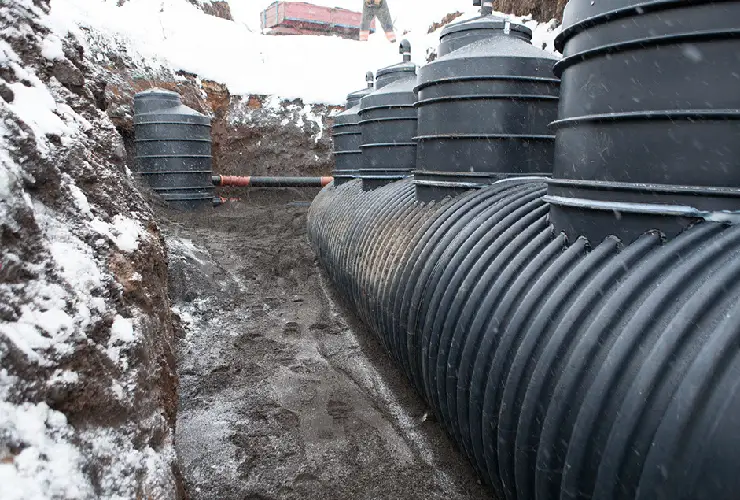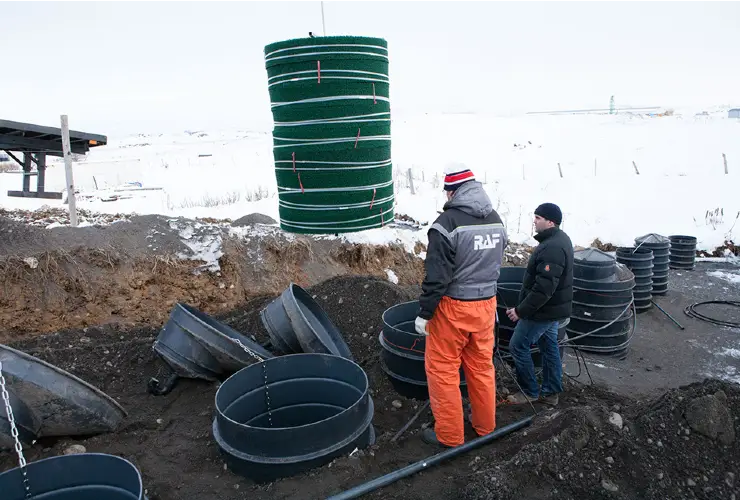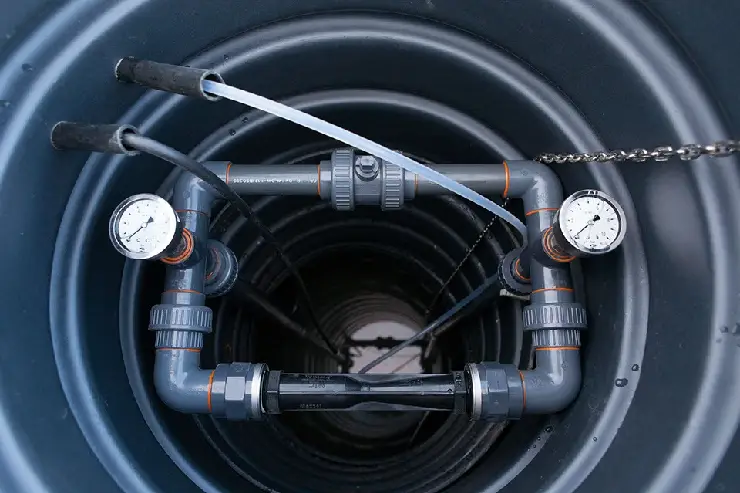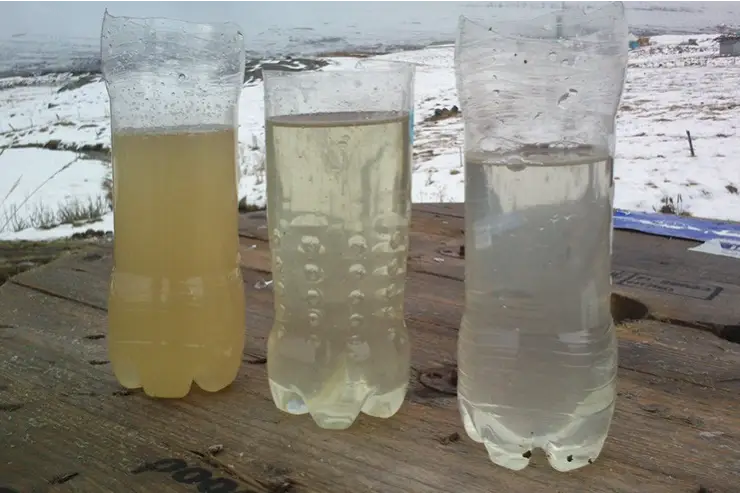
KEY FEATURES:
- Ozone is more effective than chlorine in destroying viruses and bacteria.
- The Ozonation process utilizes a short contact time (approximately 10 to 30 minutes).
- The ozone decomposes rapidly, so it leaves no harmful residues for removal after ozonation.
- After ozonation, there is no regrowth of microorganisms, except for those protected by the particulates in the wastewater stream.
- The ozone is generated on-site
- Ozonation elevates the dissolved oxygen (DO) concentration of the effluent. The increase in DO can eliminate the need for reaeration and also raise the level of DO in the receiving stream.
OZONE WASTEWATER TREATMENT
Ozonation in wastewater treatment is a proven and efficient alternative to enhance traditional methods. Historically, chlorine has been used for wastewater disinfection due to its effectiveness and low cost. However, a study in 1970 revealed that chlorine reacts with organic materials to create disinfection by-products (DBPs) (source), which can adversely impact public health and aquatic life. This led to fish kills in water bodies receiving wastewater that had been disinfected with chlorine. In response, the US Environmental Protection Agency (EPA) supported research into alternative disinfection technologies, including ozonation.
What is Ozonation in Wastewater Treatment?
One technology that has proven to be highly effective in treating wastewater is Ozonization. Ozonation is a process where ozone (a molecule containing three oxygen atoms) is generated in situ by an ozone generator. This ozone gas is dissolved in water, known as ozonated water, to kill microorganisms and remove both organic and inorganic pollutants. The ozone acts as a powerful oxidizing agent, breaking down organic compounds and neutralizing harmful bacteria and viruses through a safe chemical reaction. It is a widely used technique in both industrial and municipal wastewater treatment. Once the ozone is in the water, the ozone molecules attach to pollutants or microorganisms and oxidize them, effectively destroying these contaminants. Ozone can be applied in various process stages, providing a high degree of flexibility for wastewater treatment plants. Also, Ozone can be combined with other oxidants like hydrogen peroxide to create Advanced Oxidation Processes (AOPs) in any water purification process.
How Does Ozonation Water Treatment Work?
An industrial wastewater treatment disinfection system typically includes several stages: pretreatment, primary treatment, secondary treatment, tertiary treatment, and disinfection. Wastewater treatment aims to remove pollutants and contaminants from water, allowing it to be safely released into the environment. The industry uses bio and mechanical filtration for the bulk reduction of BOD/COD. By the filtration method, BOD/COD is reduced from 115,000 mg/L to 50-100 mg/L. Bio and mechanical filtration are becoming very expensive when it comes to reducing BOD/COD to a lower level. That is where hundreds of Water Treatment Plants (WTP) use ozonation. Ozone can be used as the final step in the wastewater process because it is very effective as a water polisher. For instance, ozonation economically reduces BOD/COD to safe levels before discharge into the receiving water (Check this article to learn how to size an ozone generator). Aside from decreased processing costs, ozone systems will also help eliminate the penalties associated with contaminated water disposal. Further benefits include the implementation of clean, environmentally friendly technology, increased oxygen demand, and improved aesthetic characteristics resulting from a reduction in turbidity.
Why is Ozonation Important?
Ozone is significantly more effective than chlorine at inactivating a wide range of pathogens, including viruses, bacteria, and protozoa such as Cryptosporidium and Giardia—organisms that are resistant to conventional chlorination methods. One of the significant advantages of ozonation is its short required contact time, typically between 10 and 30 minutes, to achieve high levels of disinfection. Since ozone decomposes rapidly into oxygen, it leaves no harmful residues in the treated water. Additionally, ozonation prevents microbial regrowth in the distribution system, except for microorganisms physically shielded by particulates in the wastewater stream. Another key benefit is that ozone is generated on-site, eliminating the risks and costs associated with storing, transporting, and handling hazardous chemicals. This makes ozone not only a safer option but also a more sustainable one.
What are the Advantages of Ozonation in Wastewater Treatment?
- Oxidation of wastewater effluents has several benefits. For example, there is an increase in dissolved oxygen, a decrease in chemical usage, and a reduction in turbidity and colour.
- Ozonation is an effective antimicrobial oxidizing agent, disinfectant, and sanitizer.
- Ozone is very affordable.
- It is a natural, environmental sanitizer to which no microorganisms can build immunity.
- Chlorine does not affect Cryptosporidium P., but ozonation does.
- Ozone has a short half-life and breaks down, reverting to oxygen atoms.
Ozone wastewater treatment is now a mature technology used for municipal wastewater treatment in most of the world’s largest cities. We have ozone generators to meet the needs of our clients in both the largest cities and small, remote villages.
Do you want to learn more about how ozone can benefit your business? Contact us today to speak with one of our water treatment experts and explore your options.
Wastewater Treatment Bioreactor Pictures
Wastewater Treatment Bioreactor Video

